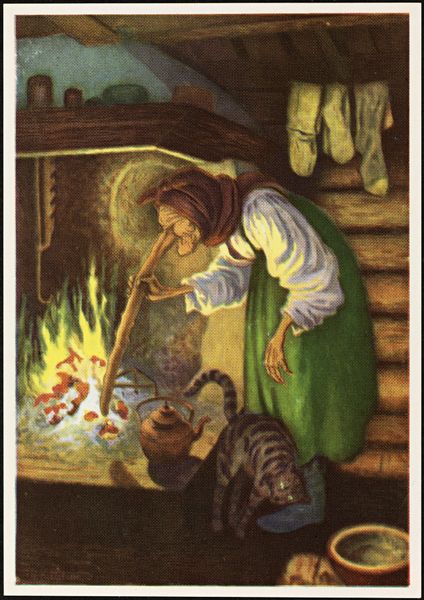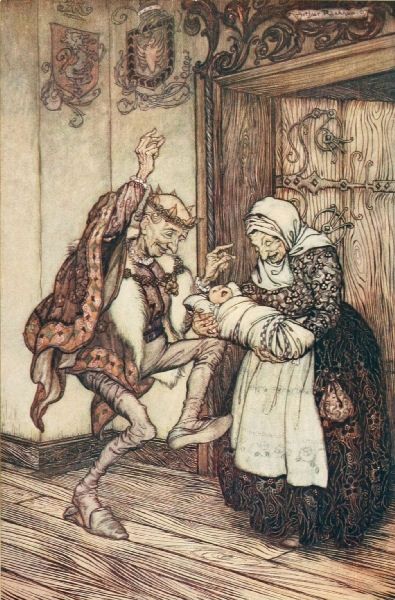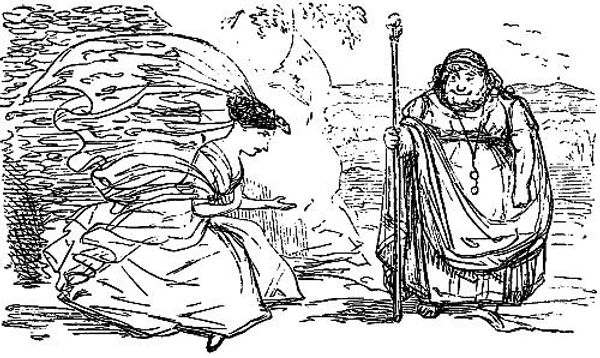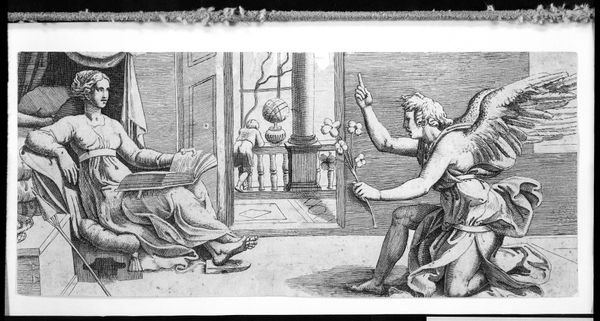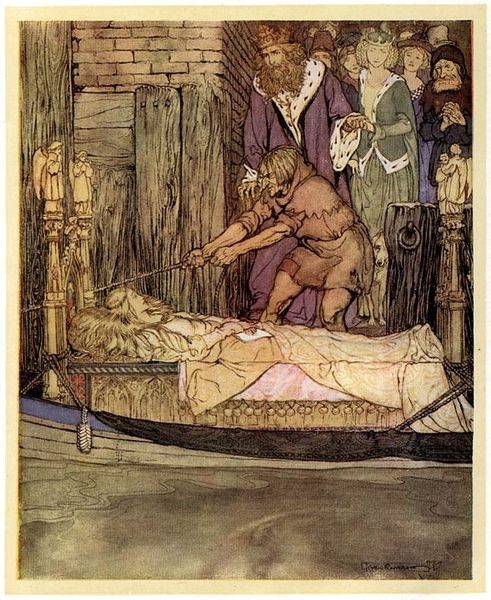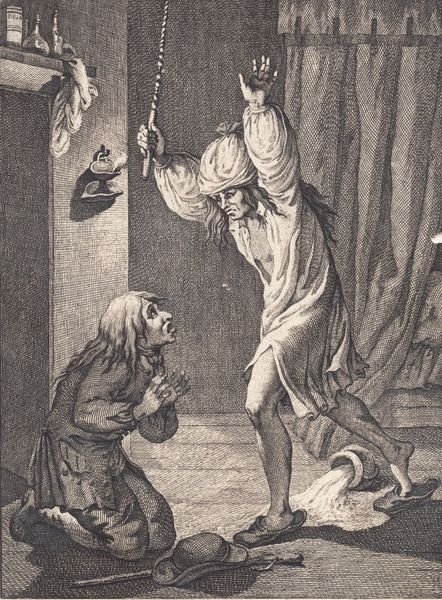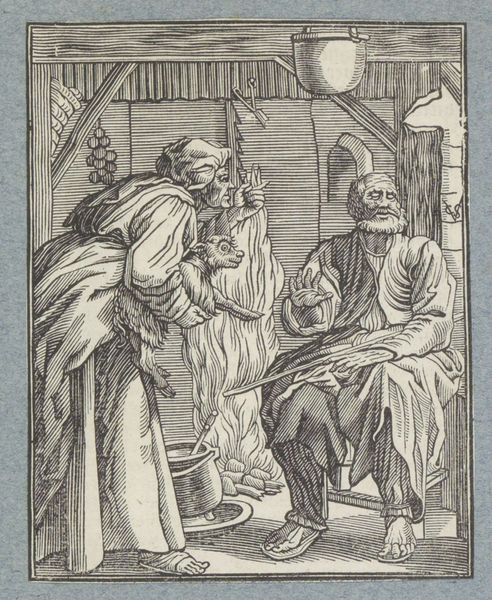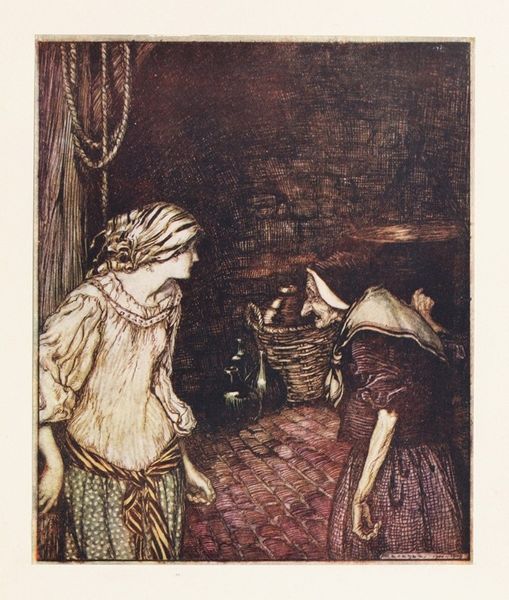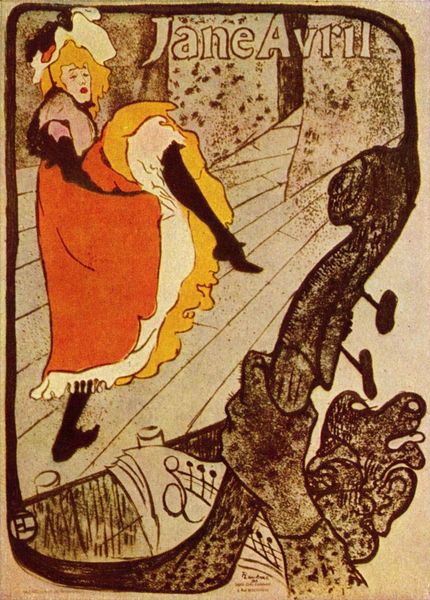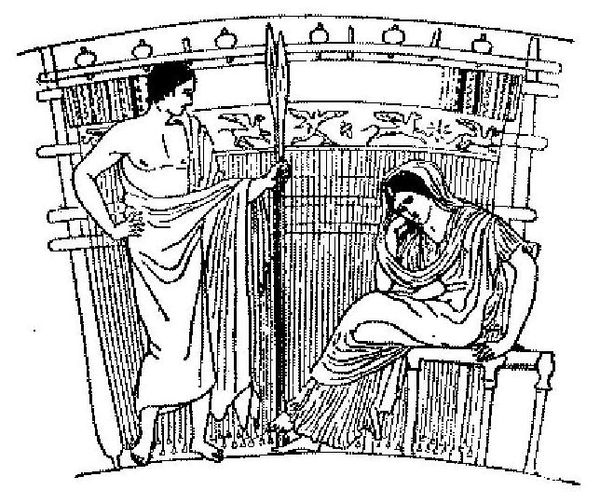
Illustration for "The tale of three royal divah and the Ivashko priest's son" 1911
0:00
0:00
#
comic strip
#
collage layering style
#
fashion and textile design
#
junji ito style
#
illustrative and welcoming imagery
#
wedding around the world
#
graphic novel art
#
cartoon theme
#
multiple paintbruush use
#
bridal fashion
Copyright: Public domain
Editor: This is Ivan Bilibin's illustration for "The Tale of Three Royal Divah and the Ivashko Priest's Son" from 1911. There's something very eerie yet whimsical about this. What do you see in this piece, especially considering the time it was made? Curator: Bilibin was deeply invested in the revival of Russian folk art and fairy tales, and this piece speaks to a specific moment of national self-discovery, intertwined with the rise of modernism. What seems eerie is Bilibin's engagement with traditional figures like Baba Yaga, but he is not simply illustrating; he's reimagining her. He acknowledges her power as a disruptive force. Editor: A disruptive force, how so? Curator: Consider that Baba Yaga represents the untamed, the feminine outside societal norms, a figure that challenges patriarchy, and often acts as a guide or gatekeeper for young heroes. In this context, the 'tale' can be read as a coded commentary on gender roles and societal expectations prevalent at the time. Bilibin, through his art, is actually engaging in a broader socio-political conversation about identity. Editor: I see, so he is not only drawing from folklore, but also adding a layer of social critique? It is pretty amazing how Bilibin used folklore to talk about pressing societal concerns! Curator: Precisely. By reinterpreting these characters, he opens a space for questioning power dynamics and advocating for more nuanced understandings of gender, class, and even national identity within Russia at the dawn of the 20th century. This allows us to engage in discussions about similar systemic issues within contemporary society. Editor: I hadn't considered the socio-political commentary. Thanks, it’s amazing what looking through the lens of social activism uncovers!
Comments
No comments
Be the first to comment and join the conversation on the ultimate creative platform.

